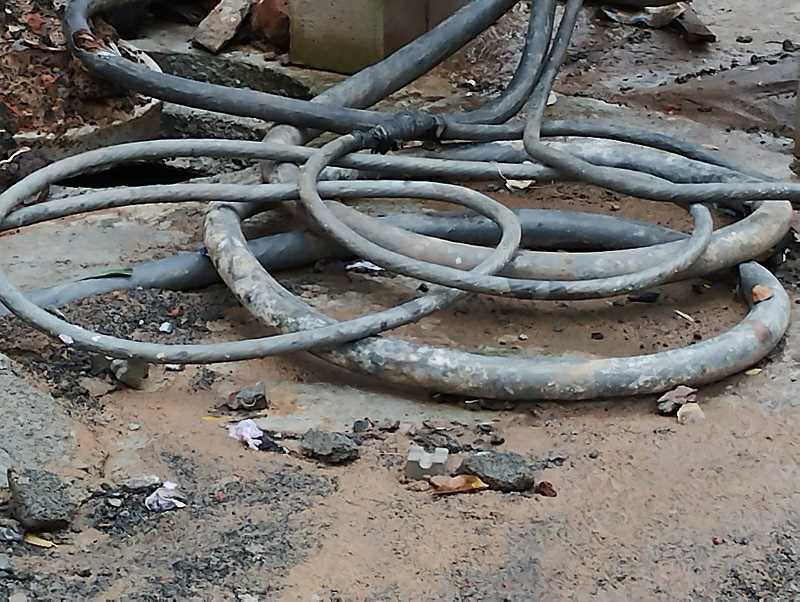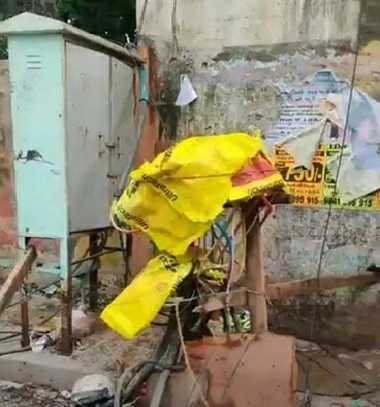The Greater Chennai Corporation has been working on stormwater drain (SWD) desilting and restoration work, along with the creation of new drains across the city, over the past six months.
Building a stormwater drain network to cover the entire city can be a challenging task. The experience over the past months has established that regardless of the talent and knowledge of professionals involved in creating stormwater and flood management facilities, it is prudent to seek public input during the planning, design, maintenance and operation phases.
With their knowledge of local practices and preferences, the public can bring to light issues that could prevent future tragedies. Seeking public input also enhances public awareness of a project’s safety implications before the fact.
Importance of effective SWD design
A fully functional storm drain requires installation at a specific angle to allow a smooth discharge of water. If the same is built on a flat location, water stagnation within the drain and possible blockage can never be ruled out. This is normally overcome by providing a slope towards the area of gravity. If the pit is too deep, the water will flow too quickly and cause water stagnation at the end. Many safety concerns can be mitigated only through proper planning and design.
It is impractical, if not impossible, to provide zero risk at stormwater management facilities. Like other types of public works infrastructure, there are inherent risks associated with conveying, storing, treating, managing and disposing of stormwater. While risks can be mitigated through proper design and maintenance, it is impossible to entirely eliminate risk.
Several service provisions are passed underground, such as electricity and fibre cables, sewer lines as well as plumbing pipes. A wrong move could damage other systems and disrupt the services. Such damage entails a considerable expense to repair.
When the work took place across Chennai over the past few months, existing drains were dug up in an ad-hoc fashion. There was no proper planning or coordination with the various government agencies and such crucial aspects were not taken into consideration in some areas. Many hazards at stormwater facilities can be anticipated, discussed with relevant public and private parties, evaluated and mitigated where appropriate. Public discourse and education on the purpose of separate sewage and stormwater facilities and their potential danger would have helped minimise the issues we are facing today.
Read more: Residents step up to monitor Mandaveli SWD work
Damage caused by SWD network
In our locality, we noticed that sewage, water pipes and electricity cables in many locations were damaged during the ongoing SWD work. The Chennai Metro Water Supply and Sewerage Board (CMWSSB) and TANGEDCO workers had to be called upon to replace existing water and sewage pipelines and attend to the damages caused to the electricity cables.
It was a horrendous experience for the residents living in several neighbourhoods across the city. Members of civic engagement groups across the city had been constantly following up and addressing issues of public interest by lodging petitions with the concerned agencies and escalating the matter through digital and print media. Appeals on social media platforms have also helped most of us in resolving the issues in a time-bound manner.
Wherever the restoration work had been taken up, the contractors had failed to take all the safety aspects into consideration. Stormwater drain manhole chambers and the trenches they had dug up were left abandoned for several days if not weeks together in areas like Patel Road, Nelvayal Road, Madhavaram High Road & Bharathi Road in Ward 71 in Perambur
Electricity pillar boxes were dislodged from the foundation to facilitate the construction of the SWD and left unattended for weeks together. In some locations, the boxes were removed entirely and kept aside.
Coordination between agencies lacking
The situation residents faced in Muniappan Street in Ward 44 is emblematic of the breakdown in communication between various agencies. This street was milled over eight months ago and the residents were hopeful that the road would be resurfaced immediately.
As the wait went on, CMWSSB chose to replace the metro water mains by digging up the middle of the road. Months later the GCC decided to construct a stormwater drain and a trench was dug up on one side of the road.
There were areas where EB wires were running through or across the existing stormwater drains which had to be shifted. The wires were left dangling on the compound walls or wooden poles as a temporary measure. The EB Distribution Pillars were removed completely and the live wires were left under the cover of some plastic sheets.
Fortunately, nothing untoward has happened during the heavy downpour in recent weeks.
Once residents became aware of the danger, complaints were lodged with the authorities concerned and the issue was escalated. The issue of the exposed electricity wires was addressed by TANGEDCO after pleas from residents.
But this is just one location. Even to this date, there are several more such spots where the wires can be seen lying on the floor. Residents also made note of many spots where the shield and armour of the high-voltage power cables were damaged. Cables which were dislodged from their existing location to facilitate the construction have been drawn over the sides of the SWD in a very haphazard manner.
It would have made good sense to provide proper ducting or casing facility within or through the concrete ceiling of the drains for the cables and other services during the construction of the stormwater drains. Every time a cable fault is attended to or a new service connection is provided through the existing stormwater drains, we get to see the workers breaking the concrete walls or the ceiling. By facilitating necessary provisions for the service lines at regular intervals across the length of the stormwater drain the difficulties and damages caused to the structure in the long term can be avoided.
Read more: Tree felling in K K Nagar for SWD work leads to protests
Dumping of sewage in SWD network
Another serious violation that has been observed is that in two locations in Ward 44 and 66, the residents have noticed tractors pumping out sewage from the CMWSSB manholes into the stormwater drains. When the contract workers were quizzed about why this was being done, the residents were informed that the Assistant Engineers had asked the workers to do so in order to clear the sewage water logging on the roads in adjacent areas.
Over the last several decades no efforts have been taken by CMWSSB to upgrade the existing sewage pipelines across the city. Individual houses have made way for high-rise apartments within the city. With an increase in the number of families living within a property, the load factor on the drains has also increased significantly. This has resulted in sewage overflow and clogging, especially during monsoons.
Dumping untreated sewage into the SWD network is an abhorrent practice that would cause great harm to the city’s water table. Most of the residents across the city depend solely on groundwater resources. If the groundwater table were to be contaminated, the consequences are dire.
Lessons must be learnt quickly from these mistakes and rectified if any of the civic work being carried out in the city is to benefit the residents. The callous attitude of the officials in overseeing the work being executed should be checked immediately.
To do so, citizen participation in governance is the only way forward. One of the solutions would be to constitute platforms such as Areas Sabhas where residents can voice such concerns.
While work is being carried out across the city in the hopes of flood mitigation in the coming months, the absence of a long-term vision and lack of cohesion between agencies would likely cause more issues to crop up over a period of time. Ultimately, it is the residents who will bear the brunt of these problems, as is always the case.


